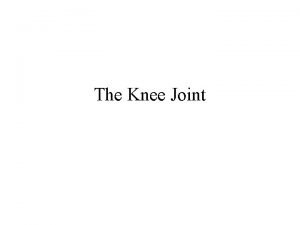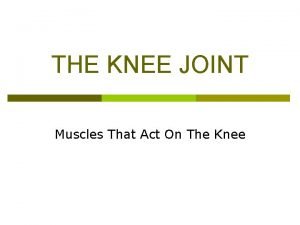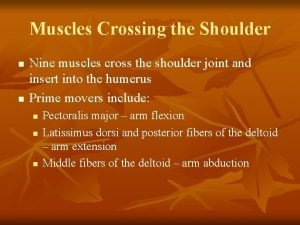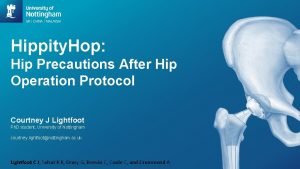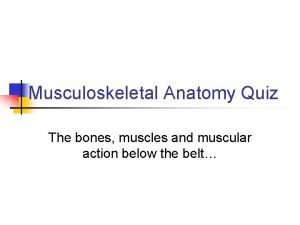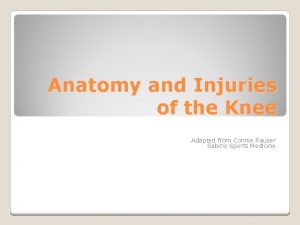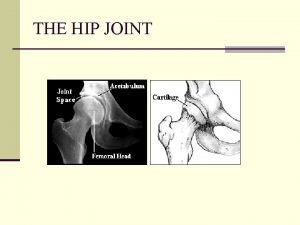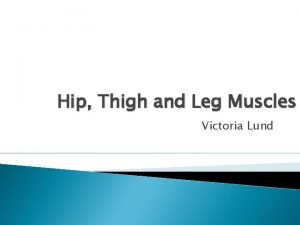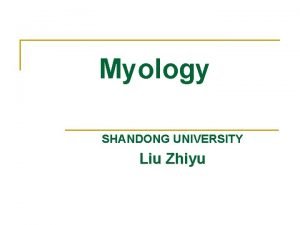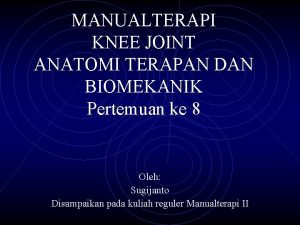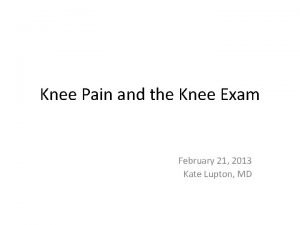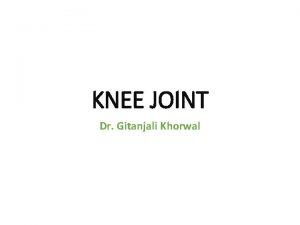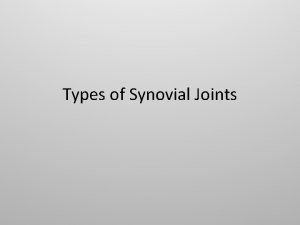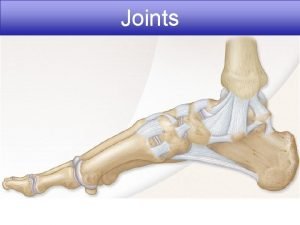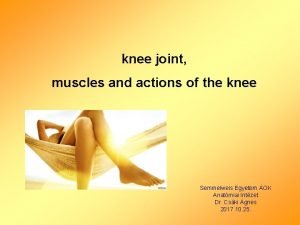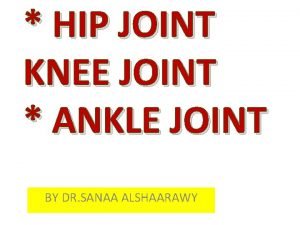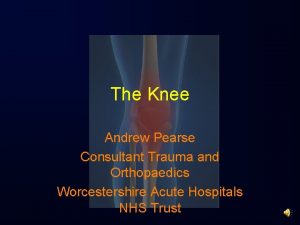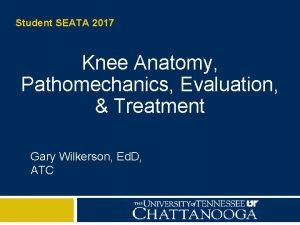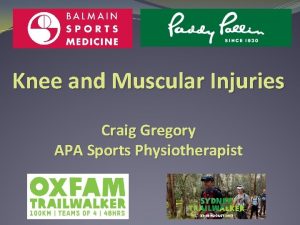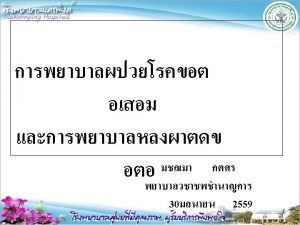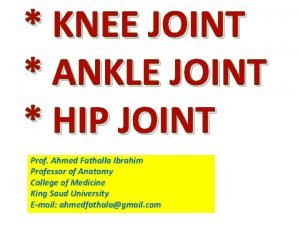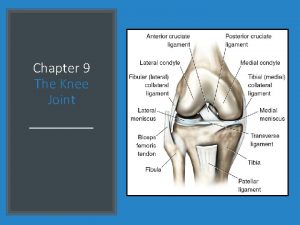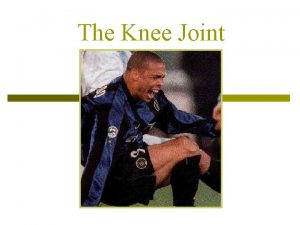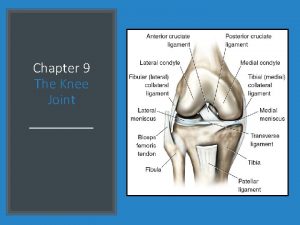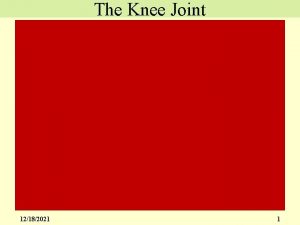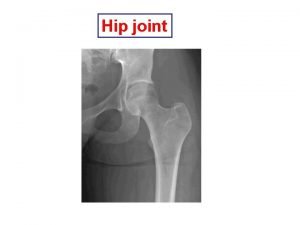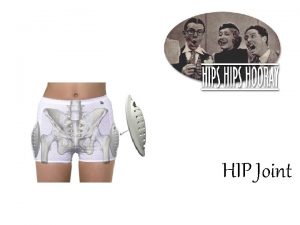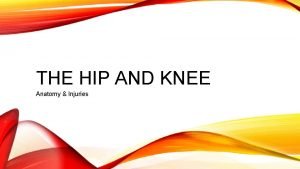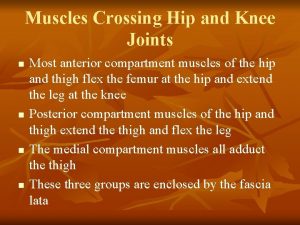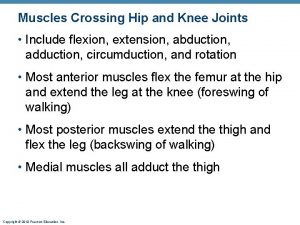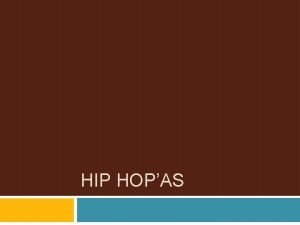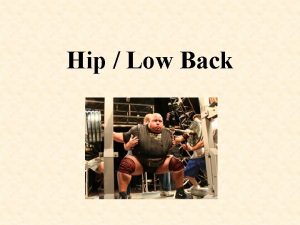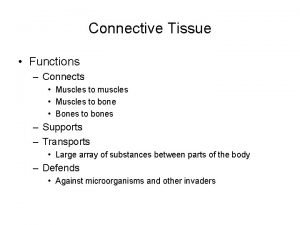The Knee Joint Muscles that cross the Hip























- Slides: 23

The Knee Joint

Muscles that cross the Hip and Knee Joints • Sartorius: – Hip flexion Knee flexion • Rectus Femoris: – Hip flexion Knee extension • Tensor Fasciae Latae: – Hip abd. , flx. Knee ext – tenses fascia latae & extends knee via iliotibial tract • Biceps Femoris (long head): – Hip ext. , ext rot. Knee flx. , ext. rot.

Muscles that cross the Hip and Knee Joints • Semitendinosus – Hip Ext. , int. rot. Knee flex, int. rot. • Semimembranosus – Hip ext. , int. rot. Knee flx. , int. rot. • Gracilis – Hip add, int. rot. Knee flx.

The knee joint • Complex structure because of the knee functions: – allow mobility (flexion/extension) – must have some inherent stability – weight bearing joint

The knee joint • • Largest joint in the body. Classified as a ginglymus (hinge) joint Allows for primarily flexion and extension There is, however, some rotation allowed about the knee joint.

Articulating Bones • • Femur Tibia Patella Not part of the knee joint: – fibula - it does not articulate with the femur or the patella

Important Structural Landmarks • Femur – lateral and medial condyles • convex surface • Tibia – lateral and medial condyles • concave surface – tibial tuberosity • Fibula – (technically not part of knee, but important structure)

Connective Tissue • Medial (tibial) Collateral Ligament • Lateral (fibular) Collateral Ligament • Cruciate ligaments – Anterior (ACL) – Posterior (PCL) – Named based on attachment point on tibia. • Menisci – medial and lateral

Movements about the knee joint • Flexion • Extension • Internal (inward) rotation – Anterior aspect of tibia rotates inward. • External (outward) rotation – Anterior aspect of tibia rotates outward.

Muscles • Knee Extensors – Rectus femoris (two joint muscle) – Vastus medialis – Vastus intermedius – Vastus lateralis

Muscles • Knee flexors – Biceps femoris (long *, short) – Semimembranosus * – Semitendinosus * – Sartorius * – Gracilis * – Popliteus – Gastrocnemius * • (* = crosses two joints)

Muscles • Internal rotation about the knee – popliteus – semimembranosus – semitendinosus • External rotation about the knee – biceps femoris

Popliteus (p 104) • Origin – posterior surface of lateral epicondyle of the femur • Insertion – Popliteal surface of the tibia • Action – Knee flexion – Internal rotation about the knee

Hamstring Muscles • • Semimembranosus (medial muscle) Semitendinosis (medial muscle) Biceps Femoris (lateral muscle) Actions – Knee flexion – Hip extension – thigh and leg rotation • internal (ST, SM) • external (BF)

Biceps Femoris Muscle (p 105) • Origin – Long head: ischial tuberosity – Short head: posterior aspect (linea aspera) of femur • Insertion – Lateral condyle of the tibia and head of the fibula • Action – Hip extension – Knee flexion – External rotation of the hip and knee

Semimembranosus Muscle (p 106) • Origin – Ischial tuberosity • Insertion – Postero-superior surface of the medial tibial condyle • Action – Hip extension – Knee flexion – Internal rotation about the hip and knee

Semitendinosus Muscle (p 107) • Origin – Ischial tuberosity • Insertion – Upper anterior medial surface of the tibia • Action – Hip extension – Knee flexion – Internal rotation about the hip and knee

Quadriceps • Four-headed muscle – Rectus Femoris (two joint muscle) – Vastus medialis – Vastus intermedius – Vastus lateralis

Rectus Femoris (p 108) • Origin – Anterior inferior iliac spine of ilium – upper lip of acetabulum • Insertion – Superior aspect of patella & tibial tuberosity via patella tendon • Action – Hip flexion – knee extension

Vastus Intermedius (p 109) • Origin – upper two thirds of anterior-lateral aspect of femur • Insertion – Upper border of patella – tibial tuberosity via patella tendon • Action – Knee extension

Vastus Lateralis (p 110) • Origin – inferior border of greater trochanter – portion of linea aspera • Insertion – lateral border of patella – tibial tuberosity via patella tendon • Action – knee extension

Vastus Medialis (p 111) • Origin – linea aspera of femur • Insertion – medial aspect of patella – tibial tuberosity via patella tendon • Action – Knee extension

Knee Summary • Bones – femur, tibia, patella • Joint – tibiofemoral • Movements – flexion, extension, internal rot. , external rot. • Muscles – Quadriceps, hamstrings, sartorius, gracilis, popliteus
 Knee flexors
Knee flexors Semitendinosus muscle
Semitendinosus muscle Muscles crossing the shoulder joint
Muscles crossing the shoulder joint Extensor pollicis brevis
Extensor pollicis brevis Hip hop hip to the hippity
Hip hop hip to the hippity Hip hop hip the hippity
Hip hop hip the hippity Soleus
Soleus Quadriceps knee flexion
Quadriceps knee flexion Gluteus minimus origin and insertion
Gluteus minimus origin and insertion Hip thigh and leg muscles
Hip thigh and leg muscles N
N Resting position of knee joint
Resting position of knee joint Fleksi ekstensi
Fleksi ekstensi Knee joint line
Knee joint line Coronary ligament
Coronary ligament Fibular head
Fibular head F
F Arthrography
Arthrography Locking and unlocking of knee joint
Locking and unlocking of knee joint Hip extension vs flexion
Hip extension vs flexion Suspension therapy is a type of
Suspension therapy is a type of Andrew pearse
Andrew pearse Knee joint line
Knee joint line Knee anatomy
Knee anatomy
